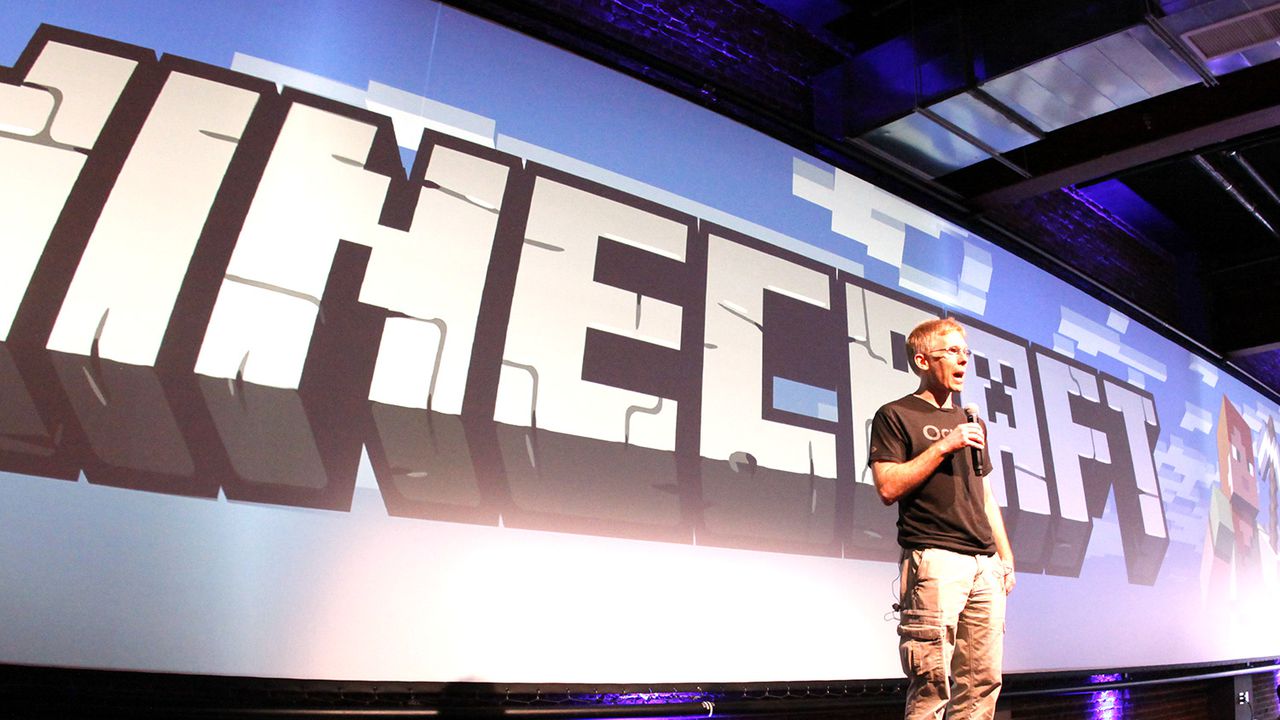
“About a year ago I got Minecraft on the Gear VR and I couldn’t tell anyone about it,” said Carmack. “And it was extremely frustrating because I was playing this game and I could spend hours playing. […] I thought it was the best VR experience that we had available. For anything.”
The reason the Gear VR is the ideal platform for Minecraft, Carmack said, is because there are no wires tethering the user to a computer. With all the processing power built into the headset itself — in the form of a Samsung smartphone — there’s nothing holding the user back from moving in any direction.
“In VR, I want to go explore the world,” Carmack said. “I think that the ability to be wireless, to spin around and have that freedom, really makes this a unique experience. […] Minecraft hits all of those buttons very, very well. It is the quintessential open-world game, and being able to explore that world in VR was what I always thought the core of this was all cracked up to be.”
/cdn0.vox-cdn.com/uploads/chorus_asset/file/6207707/oculus_chairs.jpg)
To enable that kind of experience, the demo space was littered with spinning office chairs and Gear VRs fitted with Samsung Galaxy S7 phones.
But while Minecraft has been up and running on the Gear VR for some time, it still has no release date. Looking at Minecraft: Pocket Edition side by side with Minecraft on the Gear VR, it’s easy to see why; right now, the view distance is remarkably shorter in VR.
The play space designed for journalists to experience was very narrow. While the frame rate was acceptable — I had no issues with nausea — the grand vistas I’ve come to appreciate in Minecraft were almost entirely absent.
Once I broke free from the prepared environment and ran off into the world, I immediately noticed how details were only visible out to a stone’s throw away, a distance of perhaps 40 or 50 blocks. Past that, the edge of the rendered space manifested itself as an opaque white wall. Underground, in the pitch dark, that wall actually lit entire caves, meaning I could glitch the game into giving me enough light to see.
RIGHT NOW, THE VIEW DISTANCE IS REMARKABLY SHORTER IN VR
Inside the prepared environment, it seemed as if I could see farther up and down than I could see out into the distance.
Despite these technical issues with view distance, the locomotion system was particularly well-refined. Jumps had been smoothed out, and felt more like mantling obstacles in a third-person shooter than leaping into the air.
That freedom of movement was a recurring theme in Carmack’s short speech.
“Knowing that you don’t simply control your character to turn 90 degrees this way, to move over here and turn around, but instead to actually turn your body all the way around [is powerful],” Carmack said. “You know that you’re 200 meters away this way down the hill and around the bend from where you started, and that sense of being in a big world is wonderful.”
Carmack closed by reaffirming his belief that Minecraft would be available in VR for consumers very soon.
“I said this was my grail for VR, that this was the most important gaming application that I could do, or that I could be involved with, and so I’m very proud for the part that I’ve had and I’m happy to have worked with Microsoft and Mojang to get this at the point that it’s at. I’m excited to be supporting it in the coming years as things continue to improve.”
Hands-on with Minecraft for the Gear VR, and why it’s John Carmack’s favorite platform